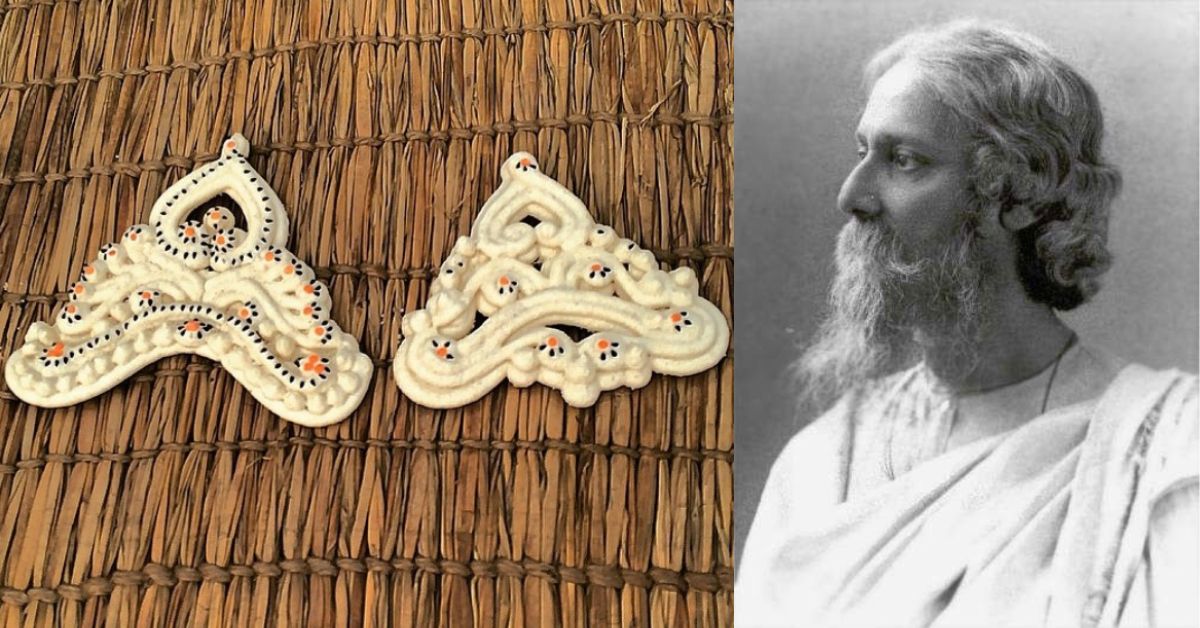The Sacred Art of Making Goyna Bori & Why It Left Rabindranath Tagore Impressed
‘Goyna bori’ or ‘gohona bori’ is an old, traditional Bengali dish with an intricate process of creation and a rich and important history. Watch this video to see why.

Featured image credit: Shubhra Chatterji (@historywali)
Bengali cuisine is a diverse and complex culinary tradition that features a wide range of ingredients and cooking techniques. One of the lesser-known, but highly prized ingredients in Bengali cuisine is ‘goyna bori’ or ‘gohona bori’, a type of lentil dumpling.
Goyna bori is traditionally made from urad dal (split black gram) which is soaked, ground into a paste, and then intricately shaped into small dumplings. They are then sun-dried for several days until they are hard and crispy, and then stored in airtight containers.
What makes these dumplings so unique is the work that goes behind each edible piece.
Traditionally, bori making is considered sacred, wherein the women of the household take a shower, wear fresh clothes, and then make two large dumplings. They covered these boris with vermillion, performed wedding rituals, and then offered prayers to them.
The boris are artistically created to look like ornaments (gohona means jewellery) in various shapes, sizes, and designs — like circles, teardrops, paisleys, shells, lotus, peacock, owls, poultry, butterflies and many others. They are typically designed on a plate filled with poppy or sesame seeds, which stick to each dumpling, giving it extra flavour and crunch.
Nobel laureate Rabindranath Tagore was so impressed by its art that when he was presented with a packet of goyna bori by a pupil, he got them photographed and displayed at the Kala Bhavan gallery.
The process of making these dumplings is labour-intensive and time-consuming, but the resulting product is versatile and can be used in a variety of dishes in Bengali cuisine like dal, vegetables, and fish curries. It adds a depth of flavour and texture to these regular dishes.
In recent years, goyna bori has gained popularity outside of Bengal, with chefs and food enthusiasts incorporating the ingredient into their dishes. Some chefs have even experimented with using different types of lentils and adding their own twist to this traditional dish.
While the demand for the dish is growing, due to urbanisation, goyna bori is a dying art. Efforts are being made to revive it, especially in rural Bengal, where there are still people who are skilled at it.
Sources:
‘Food Art From Bengal: Goyna Bori‘: by Uttara Gangopadhyay for Outlook, Published on 18 November, 2022.
‘Fragile Bengali snacks crafted with designs of an alpona – dying art of Goyna Bori‘: by Get Bengal, Published on 30 September, 2020.
(Edited by Divya Sethu)
If you found our stories insightful, informative, or even just enjoyable, we invite you to consider making a voluntary payment to support the work we do at The Better India. Your contribution helps us continue producing quality content that educates, inspires, and drives positive change.
Choose one of the payment options below for your contribution-
By paying for the stories you value, you directly contribute to sustaining our efforts focused on making a difference in the world. Together, let’s ensure that impactful stories continue to be told and shared, enriching lives and communities alike.
Thank you for your support. Here are some frequently asked questions you might find helpful to know why you are contributing?


This story made me
-
97
-
121
-
89
-
167














